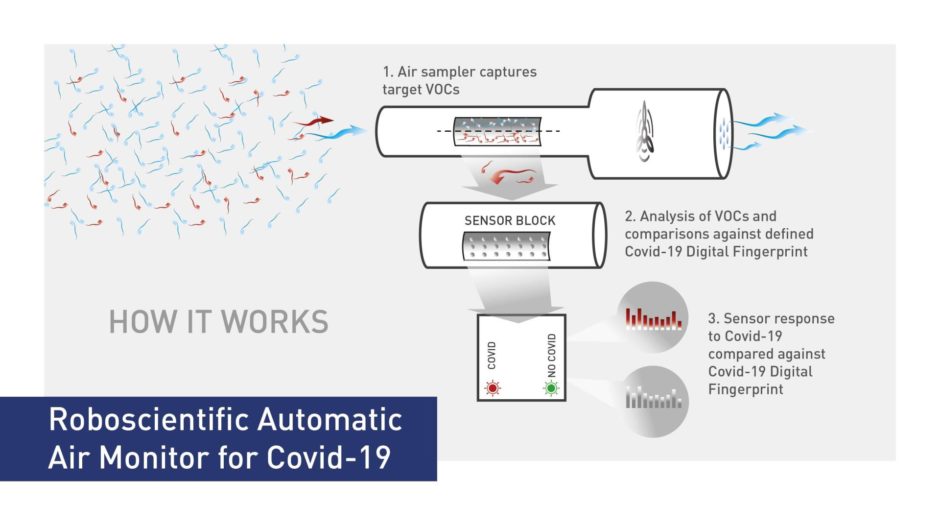A robotic sensor that detects whether anyone in the room has coronavirus could play a key role in helping pupils get back to school.
Biotech firm Roboscientific is in the process of developing a Covid-19 room monitor, a device it says will allow teachers and kids to safely return to the classroom.
The Cambridgeshire-based company is hoping to begin production later this year.
Each unit will contain an air sampler, sensors and analysis software.
It will be programmed to take air samples at regular intervals throughout the day – with a classroom where different groups will be gathering at various times in mind.
When a new group of pupils enters the room, it will sample the air and notify a designated person – for example, the school secretary or head teacher – if anyone in that space is carrying the virus.
Coronavirus in Scotland – track the spread in these charts and maps
If there is no infection present in the room, nothing will happen, but if someone in there is emitting the invisible symptoms of Covid, the monitor will detect it and create the alert allowing the school to take action – probably by isolating the class and organising individual tests.
A statement from Roboscientific said: “Compared to the expense, training and skills necessary for individual tests this new Covid-19 classroom monitor is expected to save money and improve the reliability and consistency of screening for Covid-19.
“Roboscientific is aiming to start production in Q2 2021.”
Roboscientific
The firm has previous when it comes to this kind of technology.
They have already won agricultural awards for their work developing disease detection systems for use in farms.
The Roboscientific farm monitor has been proven to detect the occurrence of diseases such as campylobacter or clostridium perfringens in chicken flocks in chicken houses.
How does it work?
Viruses generate symptoms in sufferers which create metabolic changes in a person and these generate volatile organic compounds (VOC) which are emitted by the host – in this case, a Covid sufferer.
Regular monitoring of a space allows the device to identify as soon as a change in the VOC digital fingerprints present in an environment occurs.
The equipment is automatic, so it doesn’t need an operator. It delivers pass/fail alerts and once a change is identified, a text or email is sent to a designated supervisor while it continues to gather data for closer examination.
Once the alert is received, anyone occupying the space where the disease has been detected can be isolated and given an individual test to determine whether or not they are infected.

